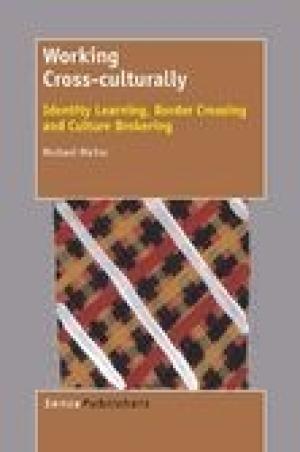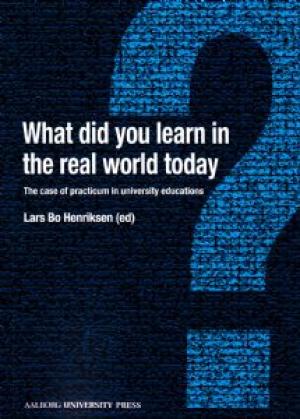Resources by Julia Lambert Fogg

Michael Michie’s 2014 publication of his dissertation argues that previous research into cross-cultural teaching has focused on skills, methods, and curriculum, but ignores teachers. To address this lacuna, Michie interviews six professional, western, K-12 science teachers of indigenous students and investigates what qualities characterize successful cross-cultural teachers and how teacher training can prepare instructors for cross-cultural contexts. Michie’s work makes three contributions to pedagogical discussions of cross-cultural teaching. First, Michie provides a sustained examination of the ways cross-cultural experiences shape teachers into “culture brokers” or “border crossers.” Michie claims the most successful teacher of indigenous students learns to be a border crosser in his or her identity formation even before entering the classroom. Second, Michie analyzes successful border crossers and constructs a profile of a border-crossing teacher. Finally, Michie suggests what kind of training shapes teachers to be successful culture-brokers. Michie claims an “international” framework for his study (1), but limits his subjects to those teaching in western, English-speaking sites (Australia, New Zealand, and Canada, 141). Michie argues that his focused data allows him to speak more precisely, and leaves expansion of this deep, thorough analysis to successive studies. Michie’s project unfolds in six chapters. In chapter one he defines the project and identifies himself as a “participant-researcher” with his subjects (2). In chapter two, Michie reviews the literature on western teaching of indigenous children. He sifts the anthropological, biological, and ethno-historical studies on “border crossing” and “cultural brokerage” (5) to refine the terms. He defines culture “as the social environment in which an individual is raised and lives and includes a range of concepts and beliefs that is accepted by individuals as defining their group identity” (14). The role of education is to “help those growing up in a culture find an identity within that culture” (Michie cites Bruner 1996, 15). This move brings identity studies and questions of power into the forefront of pedagogy – the (western, powerful) identity of the teacher and the (indigenous, marginalized) identity of the students. Thus teaching requires dexterity and self-awareness in crossing cultural borders. Michie’s first contribution is to distinguish between terms in the literature. In his subjects, Michie finds that “border crossing” (“the ability of people to move metaphorically between cultures,” [50]) is a specific identity formed in “marginal people” (51). In contrast, “culture broker” (“a strategy which an individual can be used to promote cross-cultural understanding,” [51]) is the “role” that an “intermediary” chooses when mediating between cultures (52). Next, Michie proposes that teachers in cross-cultural situations can choose a mediating role while actively cultivating respect and appreciation for the cultures they move between (as border crossers do; 52, 79). In chapter three, Michie analyzes the participant interviews looking for evidence of border-crossing experiences and cross-cultural encounters earlier in life. Teachers of indigenous students report positive affective and cognitive experiences when they engaged (pre-professionally) indigenous and first nation people (73). Michie identifies three successive degrees of engagement in the teachers. “Border crossers” choose a transitory role and show “interest in the culture and aspirations of indigenous people”; “border workers” “continue to work at the border as allies of the indigenous people”; “border mergers” exhibit a fully bi-cultural identity and do not distinguish between the cultures they navigate (80-81). Chapter four examines how participants understand the role of culture broker or border-crosser and for what purpose they use that role. Chapter five evaluates participant ideas of how to enable teachers to cross cultural borders in their classrooms. Michie then defines what kind of training can best shape K-12 instructors to teach from a culture broker role. Finally, chapter six summarizes Michie’s conclusions and applies the best teacher training practice to specifically preparing western instructors to teach science as foreign cultural knowledge to indigenous students. This study can be applied to the pedagogy of religion in at least two situations. First is for college or seminary instructors to consider teaching the academic study of religion as a “foreign” way of knowing. How might students of deep religious conviction respond differently to a perceived exercise of dissecting their sacred text if instructors cross that cultural divide between confessional faith and academic study first? The same cultural crossing might bring “nones” into a new world of thinking about and reflecting analytically on religion. Second, Michie shows that, as professional teachers, our cultural identities and our ability to meet students have already been shaped – positively or negatively. Reflecting on the degree(s) to which we are able to meet our students, cross metaphorical and cultural borders, and broker academic culture with newcomers is critical to our growth as teachers.

Henriksen’s edited volume, What Did You Learn in the Real World Today, is a collection of sophisticated and philosophically-grounded essays that shift pedagogical foci from how we teach to “what is learned” and “how is it learned” (18). The dense essays are divided into three sections. First is knowledge, learning and practice; next is the role a student’s body plays in learning and constructing new knowledge; finally, there is problem-based learning (PBL) and practicum. The Danish Aalborg University Press funded and published the project and the specific case studies (five of the eleven chapters) do reflect a public Norwegian graduate engineering program. That said, the essays, particularly in the first and second sections, have much wider relevance for re-thinking teaching practices in any discipline from the perspective of learning. They convincingly argue that applied understanding “in the real world” generates new knowledge that beneficially challenges and reshapes the theory and tradition we teach in our classrooms. It seems odd that a book promoting practicums and problem based learning is so thoroughly steeped in philosophical theory. But this is precisely the point. The essays here challenge the presumed “theory-practice dichotomy” (for example 23, 35, 53-4) by engaging the philosophical discussions of Aristotle, Dewey, Gadamer, Freire, and Bourdieu with case studies on practicums. The discussions of “techne, epistemi, poiein,” and so forth, break open the categories of “knowledge” and “learning” in fruitful ways (28-9). Student activity thus mediates thinking and being (40). The authors advocate for problem-based learning (53) that engages each student in a dialectic of dynamic knowing and doing rather than a direct transfer of static knowledge (what my students call “regurgitation”) through the “banking model” (54). This is a post-modern, and even a post-rationalist (chapter 4), exploration of learning. By challenging the primacy of theory over practice, of thinking over doing, these essays seek to integrate the whole student into the learning process (such as “Embodiment as the Existential Soil of Practice” by Thøgersen, 69-80). Indeed, the concept of learning as transformation is palpable across all of the essays (5, 23) and includes aesthetic and ethical dimensions of learning (58-8). This is helpful thinking for Liberal Arts institutions that will appreciate the argument for how and what students learn as grounded in the moral aspects of techne and phronesis rather than the more abstracted (from “real life”) episteme (60-1). Henriksen introduces the project in chapter 1 and alternates between philosophical theory in one chapter and concrete case studies in the next. Chapters 2 (on “epistemology, learning, and practice” and 3 (“the logic of practice”) are the philosophical grounding for Henriksen’s case study on an engineering practicum in chapter 4. Learning is not absorption and “reproduction,” but is instead the “production” of knowledge that comes through the engaged learning of the practicum (19). Chapter 5 then lays the next philosophical groundwork (what is the role of the physical body in learning) for the case study in chapter 6 that examines body language and spatial relationships in medical consultations to evaluate the use of electronic health records in Danish hospitals. More technology renders the physical presence of the patient irrelevant. Chapter 7, perhaps the weakest chapter, connects Dewey’s “process of inquiry” with Gadamer’s “hermeneutics” to describe how a student locates herself in a professional (“swampy”) context and negotiates solutions using both practical and theoretical tools. Chapter 8 offers support for this solution in the “real-world-on-campus” case study from the Aalborg Problem Based Learning model. Chapters 9 and 10 respectively evaluate PBL by analyzing student “employability,” the role of the university engaged in the world, and the success of Aalborg’s PBL model in multiple European contexts. Further integration and incorporation of the practicum into university curricula demands a dialectical conversation between case studies in the field, classrooms, and campuses so that theory and practice are mutually reshaping one another. In the final analysis, What Did You Learn in the Real World requires effort, not only to appreciate the threads of the philosophical conversations, or the (mostly) northern European educational contexts, but also because the English phrasing is rough and not intuitive for native speakers. That said, although Scandinavian engineering programs are quite remote from U.S. seminaries or even undergraduate Liberal Arts institutions, the bulk of these essays open fascinating conversations about learning, knowledge, and engagement of the whole person – student and teacher (à la Freire) – in both study and practice. In other words, the deep wrestling with antecedent philosophers and pedagogues to articulate what students learn in practicum and how students learn it has much to offer our collective thinking about engaged learning in diverse institutional contexts. It becomes quite clear that “how we learn” does and will have consequences for what we learn, and especially for how we construct knowledge.